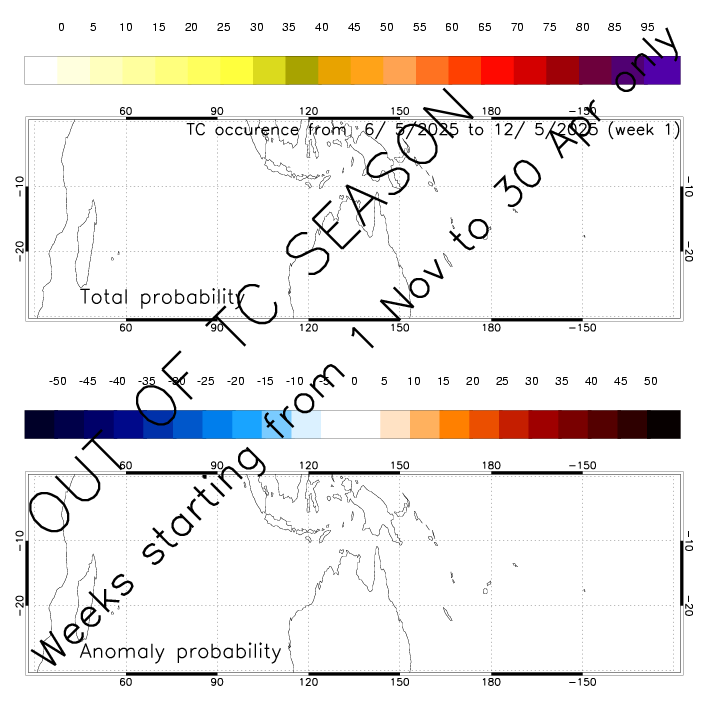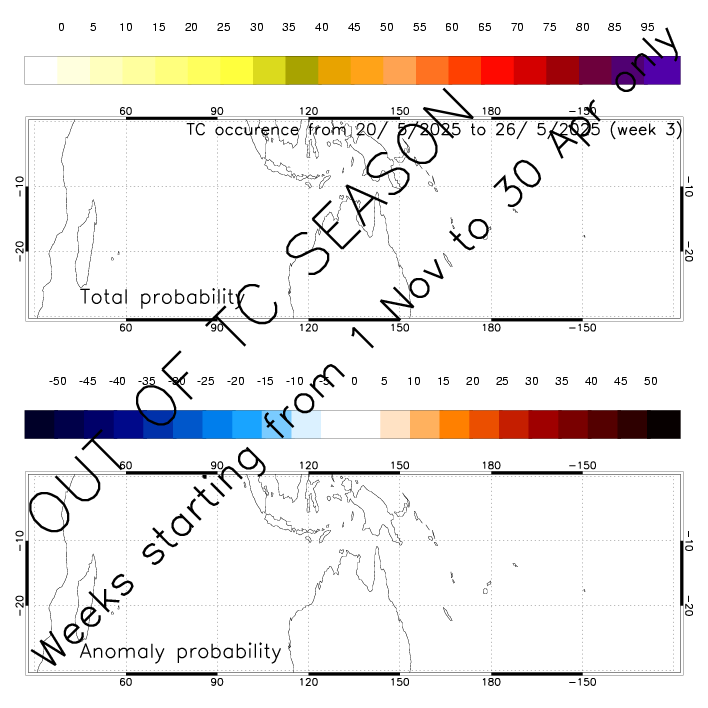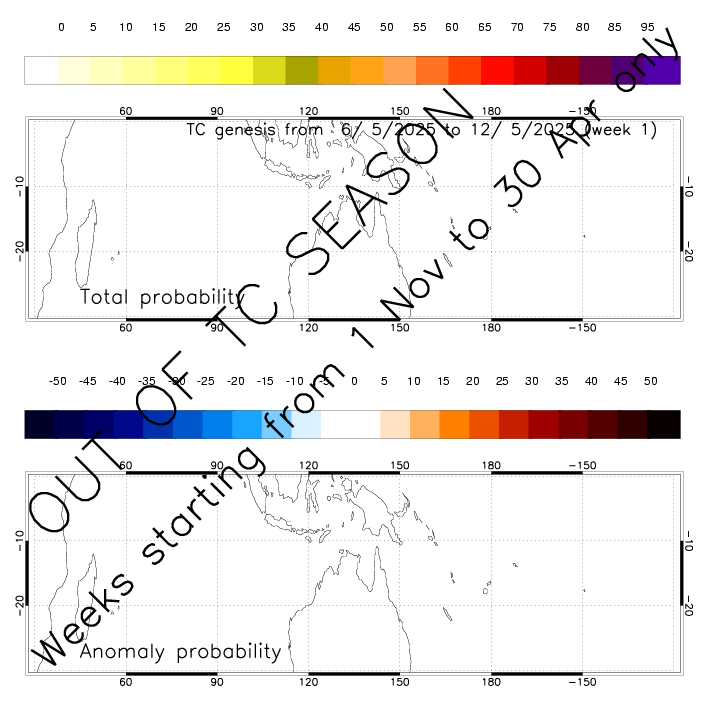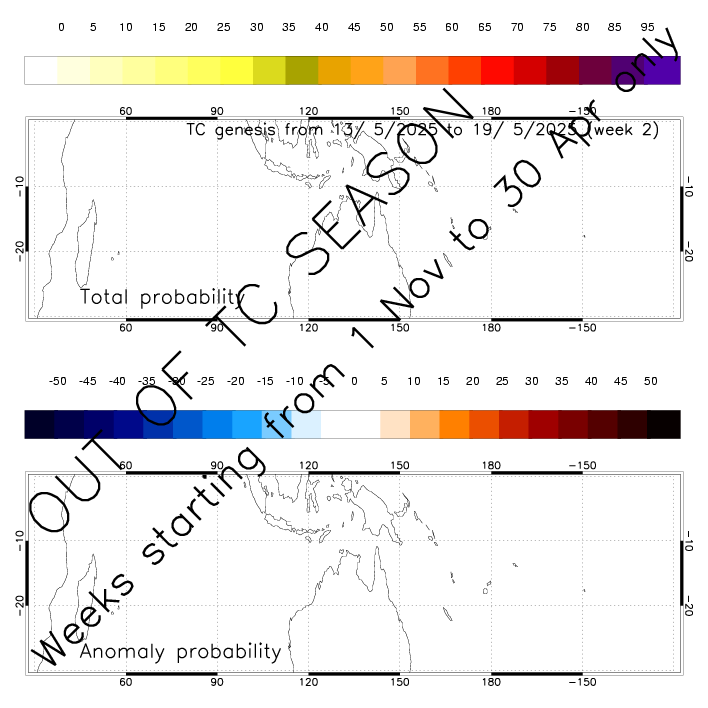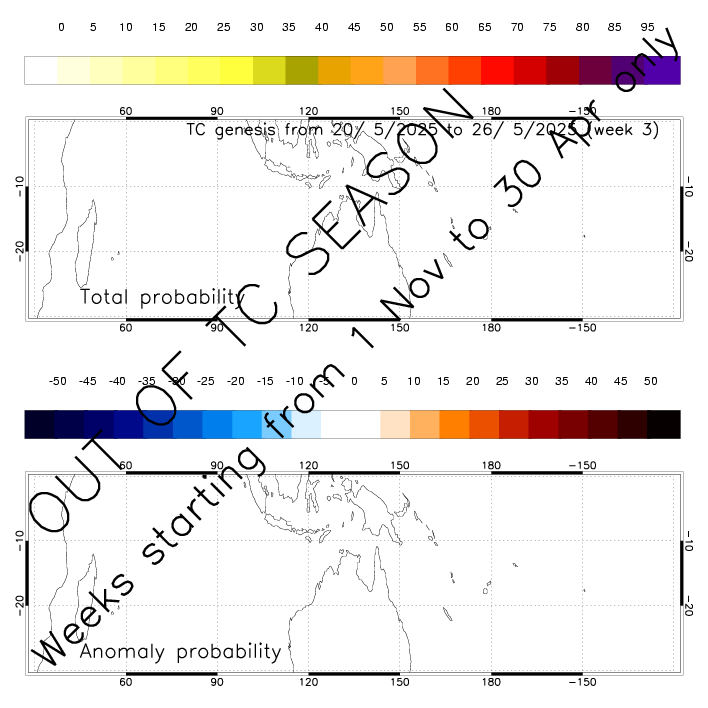
Current season
DISCLAIMER :
These forecats are not intented for public attention and do not constitute a operationnal warning system. They aim to provide estimates of tropical cyclone risk in the coming three weeks. Understanding these probabilistic forecasts may not be obvious to an uninformed visitor and requires reading the scientific documentation.
The estimates below are based on the present state of some major components of the climate system, known to influence tropical cyclone activity. It has to be taken into account when assessing the risk in the coming weeks. For a complete analysis, it is recommended to combine informations from numerical weather prediction models and the possible occurrence of tropicale cyclone as stated below (especially for the first week of forecast).
This kind of analysis can not allow to conclude with certainty whether a hurricane will happen or not, but it can determine when and where cyclonic phenomena are favored.
For information on tropical cyclone alert in the vincinity of New Caledonia and Wallis and Futuna, see section "Cyclone/Phénomène en cours". For other regions, please refer to your local meteorological office.

